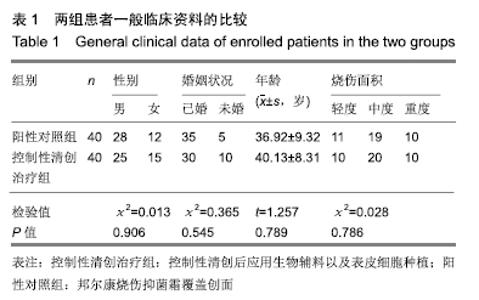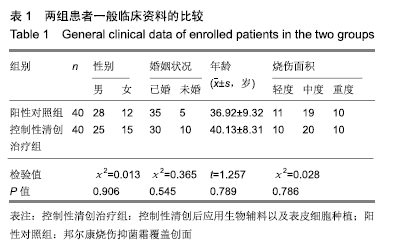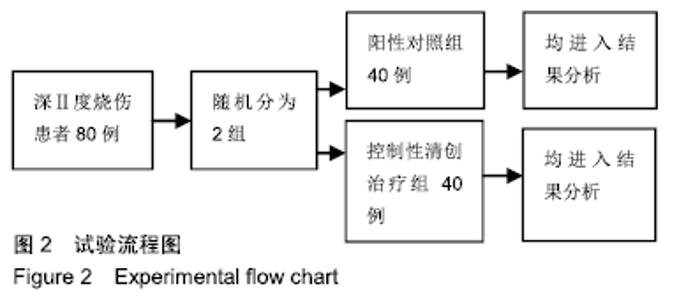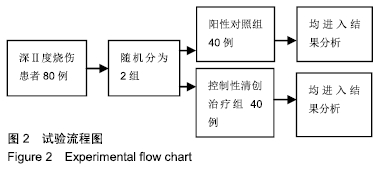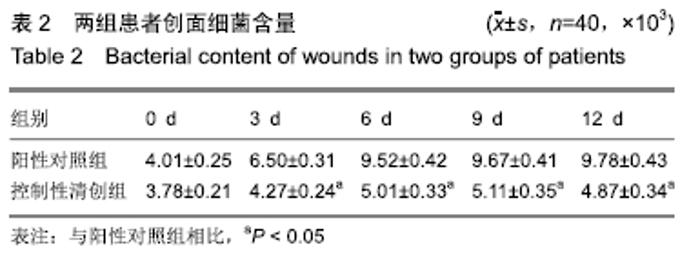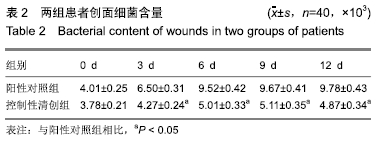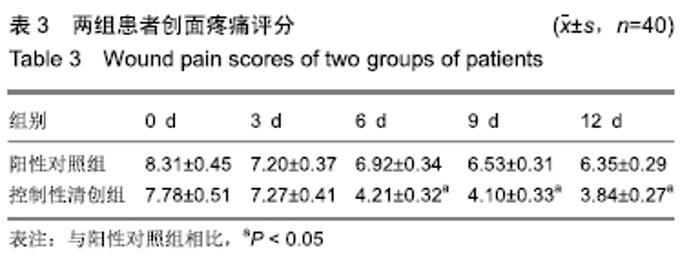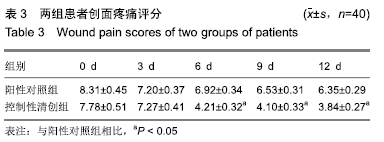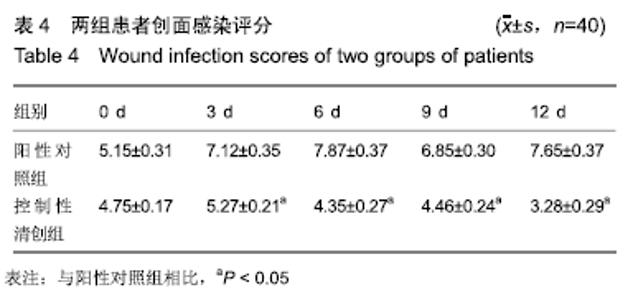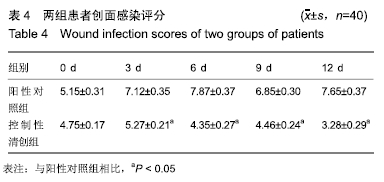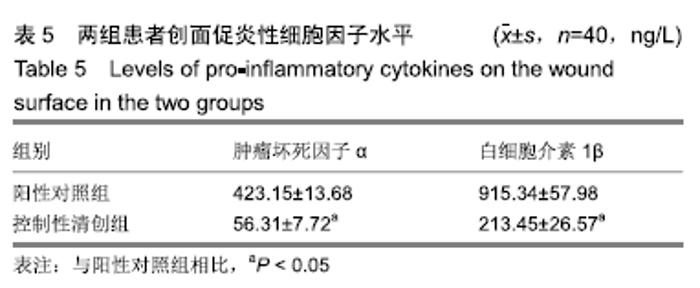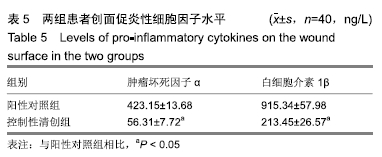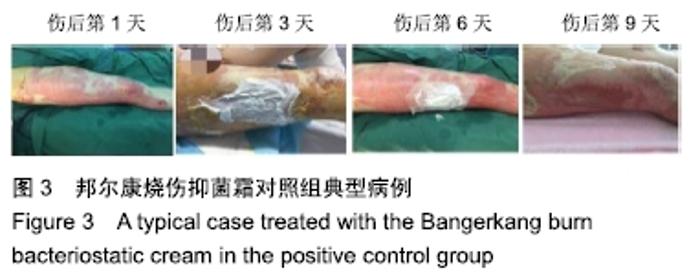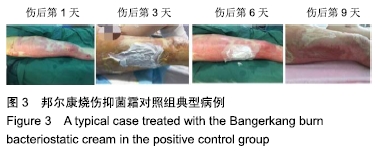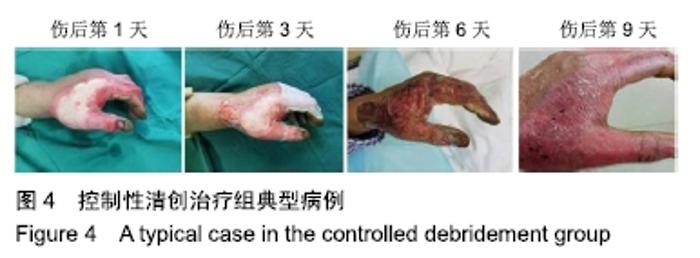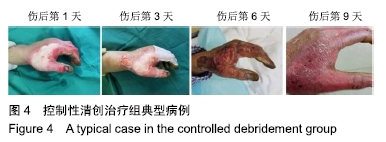[1] YAN D, LIU S, ZHAO X, et al. Recombinant human granulocyte macrophage colony stimulating factor in deep second-degree burn wound healing. Medicine (Baltimore). 2017;96(22):e6881.
[2] GREEN B. Making an informed decision : how to choose the correct wound dressing:wound care. Wound Healing Southern Africa.2013;6(1):12-20.
[3] ARVANITI K, LATHYRIS D, CLOUVA-MOLYVDAS P, et al. Comparison of Oligon catheters and chlorhexidine-impregnated sponges with standard multilumen central venous catheters for prevention of associated colonization and infections in intensive care unit patients: a multicenter, randomized, controlled study. Crit Care Med. 2012;40(2):420-429.
[4] 王磊.重组牛碱性成纤维细胞生长因子凝胶联合纳米银敷料促进烧伤创面修复78例[J].中国药业,2015,24(17):117-118.
[5] 孙永华,于东宁,陈旭,等.几种深Ⅱ度烧伤创面处理方法的回顾及改善创面微循环的初步实验研究[J].中华烧伤杂志, 2005,22(1):17-20.
[6] 王德昌.成批烧伤深Ⅱ度创面的处理策略[J].中华损伤与修复杂志(电子版),2014,9(3):3-6.
[7] SULLIVAN T, SMITH J, KERMODE J, et al. Rating the burn scar.J Burn Care Rehabil. 1990;11(3):256-260.
[8] NEDELEC B, SHANKOWSKY HA, TREDGET EE. Rating the resolving hypertrophic scar: comparison of the Vancouver Scar Scale and scar volume. J Burn Care Rehabil. 2000;21(3): 205-212.
[9] MUSTOE TA, COOTER RD, GOLD MH, et al. International clinical recommendations on scar management.Plast Reconstr Surg. 2002;110(2):560-571.
[10] NORBURY W, HERNDON DN, TANKSLEY J, et al. Infection in Burns. Surg Infect (Larchmt). 2016;17(2):250-255.
[11] PALING FP, WOLKEWITZ M, DEPUYDT P, et al. P. aeruginosa colonization at ICU admission as a risk factor for developing P. aeruginosa ICU pneumonia. Antimicrob Resist Infect Control. 2017;6:38.
[12] 李孝建,钟晓旻,张志,等.烧伤创面处理不当致感染、并发脓毒性休克和MODS的救治[J].中华损伤与修复杂志(电子版),2011,6(6): 932-938.
[13] 李罡,李叶扬,林伟华,等.封闭负压疗法修复严重深度 烧伤创面[J].中华损伤与修复杂志(电子版),2010,5(1):97-100.
[14] 曾勇,董肇杨,彭媛,等.医用生物胶体分散剂治疗深Ⅱ度烧伤创面的效果[J].中国医药导报,2015,12(13):83-86.
[15] 胡大海,易南.实用烧伤康复治疗学[J].北京:人民卫生出版社,2015: 13-14.
[16] 戈晓红,季利江.汇涵术泰护创液促进低位肛瘘术后创面愈合50例疗效观察与护理[J].齐鲁护理杂志(中旬刊), 2012,18(29):140.
[17] 张焕梅,吴丽芬.汇涵术泰护创液在新生儿脐部护理中的应用[J].齐鲁护理杂志,2013,19(22):112-113.
[18] SAITO A, MIYAZAKI H, FUJIE T, et al. Therapeutic efficacy of an antibiotic-loaded nanosheet in a murine burn-wound infection model. Acta Biomater. 2012;8(8):2932-2940.
[19] HEO DN, YANG DH, LEE JB, et al. Burn-wound healing effect of gelatin/polyurethane nanofiber scaffold containing silver-sulfadiazine. J Biomed Nanotechnol. 2013;9(3):511-515.
[20] 黄国宝,宋国栋,贾军,等.应用全厚型生物敷料A治疗5例烧伤面积>90%患者的体会[J].中国急救医学杂志,2012,24(9):533.
[21] ZHANG Y,ZHU Y,GUPTA A,et al. Antimicrobial blue light therapy for multidrug-resistant Acinetobacter baumannⅡ infection in a mouse burn model: implications for prophylaxis and treatment of combat-related wound infections. J Infect Dis. 2014;209(12): 1963-1971.
[22] 李虹,钟宇,陈大夫,等.应用生物膜修复患者小面积深Ⅱ度烧伤创面[J].中华烧伤杂志,2011,27(4):278-279.
[23] FAEZI S, SAFARLOO M, AMIRMOZAFARI N, et al. Protective efficacy of Pseudomonas aeruginosa type-A flagellin in the murine burn wound model of infection. APMIS. 2014;122(2):115-127.
[24] SHERIDAM RL. Burns: a practical approach to immediate treatment and long-term care. Journal of Plastic Reconstructive & Aesthetic Surgery. 2012;65(9):1281.
[25] ROSBERG HE, CARLSSON KS, CEDERLUND RI, et al. Costs and outcome for serious hand and arm injuries during the first year after trauma-a prospective study. BMC Public Health. 2013; 13:501.
[26] MOHAMMADI AA, BAKHSHAEEKIA AR, MARZBAN S, et al. Early excision and skin grafting versus delayed skin grafting in deep hand burns (a randomised clinical controlled trial). Burns. 2011;37(1):36-41.
[27] 刘洪琪,沙德潜.人工真皮支架联合自体刃厚皮修复大面积烧伤患者手部创面[J].新乡医学院学报,2012,29(8):610-612.
[28] 林联铎.早期整形手术治疗手部深度烧伤的临床观察[J].中国医药科学, 2016,6(1):208-222.
|
